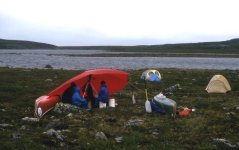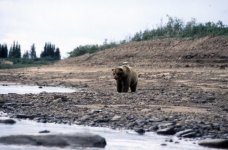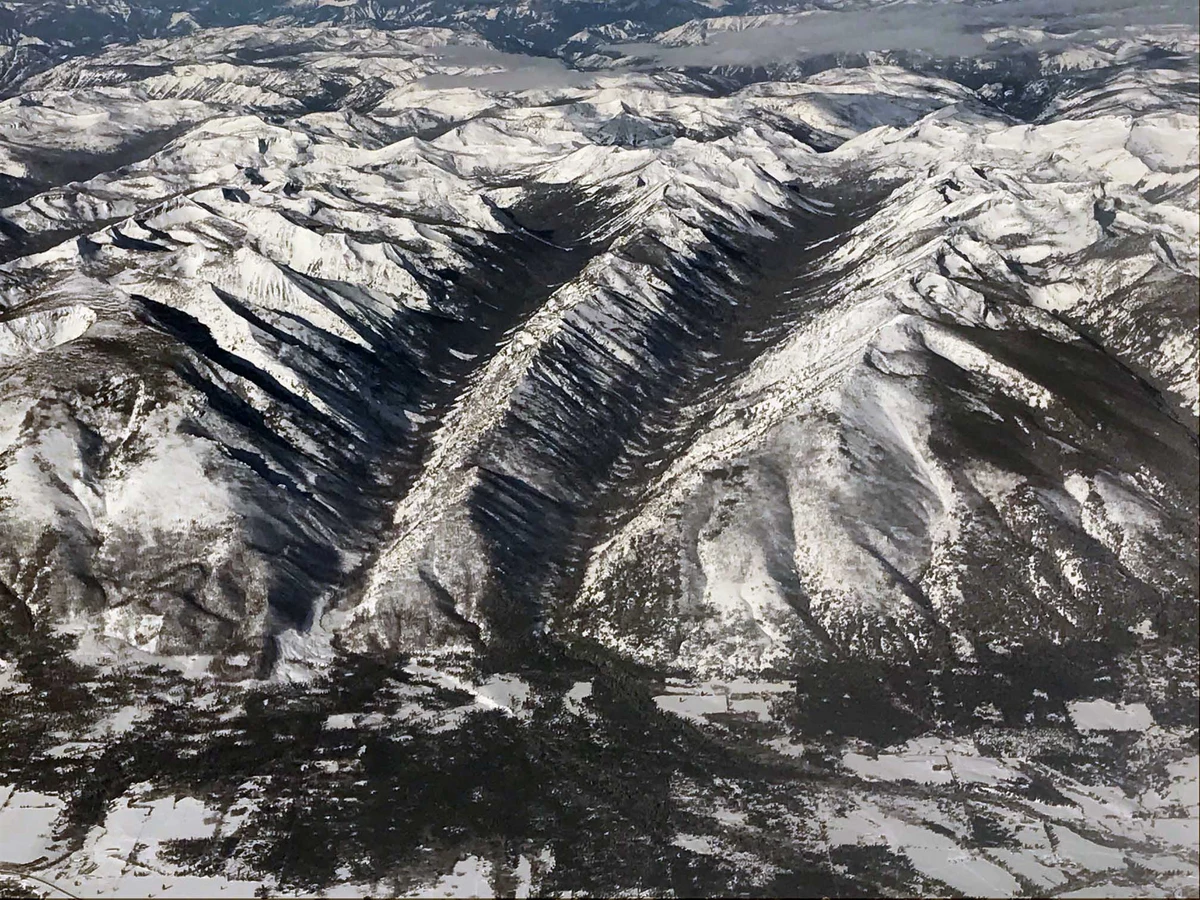Most of the backpacking that Kathleen and I have done was in the mountains of British Columbia, where Grizzlies are common. Most of the canoe tripping we have done was in the Northwest Territories, where Grizzlies are common. In our lifetime we have seen, on the ground, approximately 200 Black Bears, five Polar Bears, and 40 Grizzly Bears. We have never been threatened, although two of the Black Bears came into camp, and left only after I fired off a bear banger. We saw the Polar Bears on Hudson Bay north of Churchill. They weren’t aggressive, but neither were they deterred by our prescence.
The Grizzly Bears usually ran as soon as they were aware of us; but not always. On our 1995 Coppermine River Trip with Carey and Janice we were stormbound for 2 days at Big Lake, about halfway on our 11-day overland trip to reach the Coppermine River from Winter Lake. Carey, Janice and I were huddled beneath the tarp, preparing breakfast.

For some reason I decided to get up, just to look around, and saw a sow Grizzly and her cub approaching directly toward us, about 100 yards away. Wanting to remain calm, I stooped back under the tarp, and said, “You know, Carey and Janice, there’s a grizzly bear coming.”
”No there’s not,” Carey replied. I was obviously too calm. With more urgency I said, “Actually there’s two Grizzly Bears comlng.”
They believed me this time. All three of us stood outside the tarp, and stood tall but quietly. The sow saw us, and changed her path to amble to one side of the tarp, still about 100 yards away. She never got any closer, but she showed no real concern.
The other time was in 1993 when Kathleen and I were paddling the Thelon River. It was late afternoon, and we were tired and hungry. We pulled to shore where Kathleen jumped out, and with her back to the beach she held the bow steady for me to get out. I then saw a Grizzly coming toward us, and again, trying to remain calm, I said, “Get back in the boat Kathleen.”
She said, “What?” With measured deliberation I said, “Get. Back. In. The. Boat.” At that point she knew it was a bear. As we backed away from the beach I got the best photo I am ever likely to get of a Grizzly Bear. The bear came toward us, but stopped after only a few feet into the water. It wasn’t aggressive. Just curious. I speculate that it had been napping on the beach when we arrived.

I know things can go very wrong, but we have always felt safe when travelling in Grizzly country. We try our best to be cautious and aware. That’s all one can do, other than not go at all.

 cowboystatedaily.com
cowboystatedaily.com







